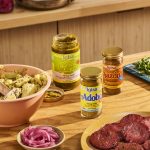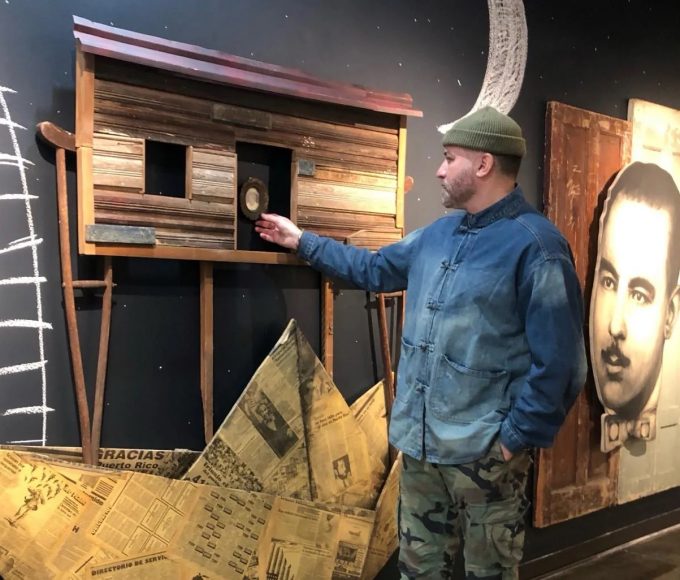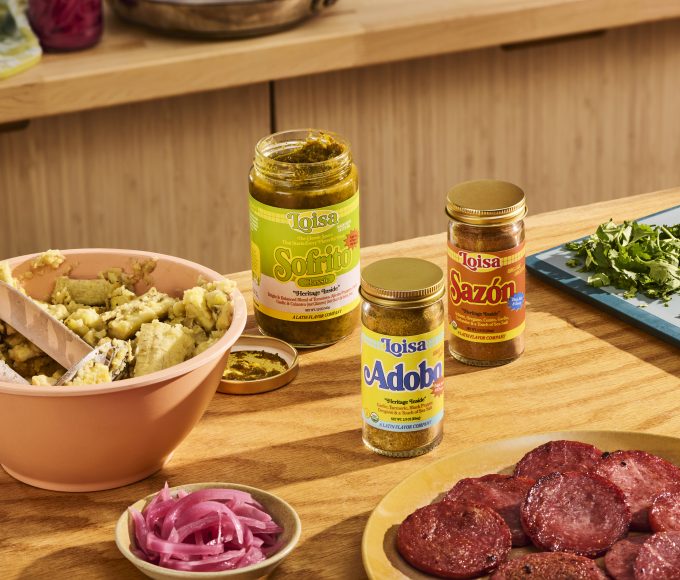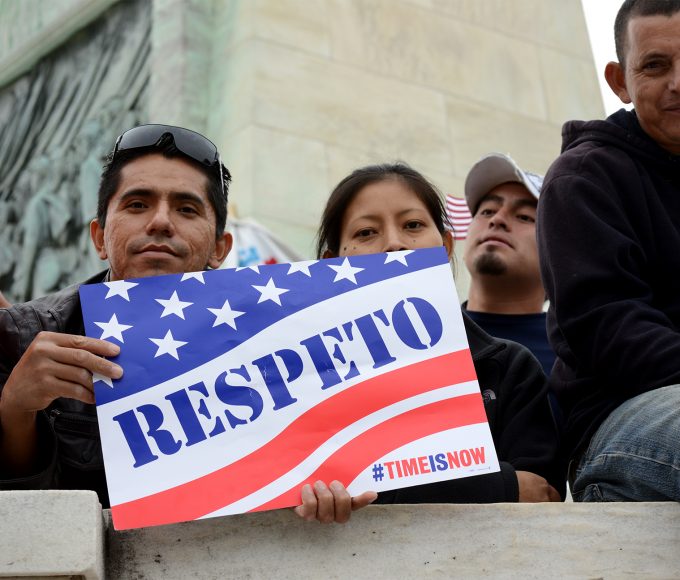Story Narrated by Gabb Schivone
This Mexican Vegan Soup Crosses Borders.
I am a volunteer in a mutual aid food program called Tucson Food Share, which expanded operations during COVID-19 to feed people in Tucson, AZ, where we are all visitors on Tohono O’odham lands in the Arizona/Sonora (Mexico) borderlands. A vegan Mexican-indigenous soup that my mother and grandmother brought over on their great migration from Navajoa, Sonora in the 1950s was included in Tucson Food Share’s first batch of recipes placed inside food bags this summer. It flies in the face of some people’s stereotypes about Mexico being such a meat-based culture. “Not my family’s fideo!” I tell them. Here is the recipe, and the story, behind the soupp.
Fideo, for me, is the quintessence of growing up in a family whose Mexican-indigenous roots were diced by the border and had to regenerate themselves in a strange, new land. This fideo emerges out of Tucson’s westside and southside barrios, where part of my family ended up after settling from Sonora in Navojoa, Los Bocas, Ciudad Obregón, where part of my family remains. I can close my eyes and inhale the memories in whole gulps—the commanding scent of fried oil and roasted tomato fanning out from the kitchen, altering the climate of the whole house, alerting me that midday meal is afoot.
Fideo, for me, is the quintessence of growing up in a family whose Mexican-indigenous roots were diced by the border and had to regenerate themselves in a strange, new land.
Meet any Mexican family here in Tucson and chances are they have their own distinct style of fideo. Take the local Lira family who owns the popular “Tanias 33” restaurant in Barrio Hollywood, on Tucson’s west side of the Santa Cruz River. You can order fideo on the menu in servings ranging from three ounces to a gallon. Although based on similar ingredients, Lira fideo will taste completely different than the one mapped out below, which we can call Camacho fideo, from my mother’s maiden name. Neither is better; they’re just different.
Our society is so commercialized that cuisine itself has become a kind of marketing tool of colonization. The idea that authentic cuisine is mainly a product to be bought and sold—one that consumers order as take-out or dine in at a restaurant, whether family-owned or a corporate satellite—rather than one engendered by ancestral rites of passage. A fellow ChicanX friend of mine—we served together in the battle to save Tucson’s Mexican American Studies program after Arizona outlawed it in 2010—summarized this concept best when someone asked her to recommend the best Mexican food in town. She laughed in their face. “If I want Mexican food, I go to my house!” she said, jeering from a sense of pride, a micro-resistance to cultural erasure.
My mother, Maria Jesus, remembers learning our family’s fideo when she was fourteen years old, taught by her mother, my nana, Maria Julia. I wasn’t much older when mama taught it to me.
Camacho Fideo crossed many borders, foreign and domestic (i.e. borders imposed by settler-colonists and by patriarchal family rulers) to land on this page. Mama Maria and Nana Maria came to the U.S. from my mother’s birthplace in Navajoa, Sonora, not long after “Operation Wetback,” then the culmination of the largest national mobilization of U.S. boundary enforcement in U.S. history, detailed in Migra! A History of the U.S. Border Patrol by Kelly Lytle Hernández. Mama Maria learned to make this soup as a teenager in the mid-1960s, around the time that Tucson’s Anglo, property-owning voting-base rammed through the “Pueblo Center Redevelopment Project” and destroyed the cultural center of downtown Tucson, displacing African-American and Asian-American heritage as well, which Lydia Otero describes in her award-winning book La Calle: Spatial Conflicts and Urban Renewal in a Southwest City. Constantly, then as today, Los Tucsonenses, the “Mexicans in Tucson, particularly working-class Mexicans, were ‘people without history,’” to quote Thomas Sheridan’s book, banned by Arizona in 2012, Los Tucsonenses: The Mexican Community in Tucson, 1854-1941. Fideo sustained many families through these times of crises, continuing today as the Trump administration has locked up more brown children than any other time in U.S. history.
Ever since mama taught me sopa fideo de mi familia, I teach it to loved ones outside my family and it’s my honor to write it down for the first time here.
Ingredients
48 oz of broth (from scratch or store-bought; beef or veggie stock)
8 oz of tomato sauce (from scratch or store-bought)
1 medium tomato, diced
2 tablespoons olive oil
2 cloves garlic
1.5 teaspoon salt
1 onion, half chopped (the other half kept whole)
Four celery sticks, chopped*
Four carrot sticks, chopped*
1 cup, fideo noodles (find in “Hispanic” section of most grocery stores, often $0.50 per bag)
3/4 teaspoon pepper
*May substitute carrots with 16 oz (1 cup) mixed vegetables.
Suggested Guidelines (bend and improvise as you wish)
1. In a 7-quart (more or less) pot, heat the 2 tablespoons oil. When warm, pour in the 1 cup fideo noodles and garlic. You may also add the chopped half-onion and diced tomato, if you like, or add during Step 3. (Optional: Boil the carrots and celery separately in water if you desire softer veggies. If so, strain the veggies just before adding them during step 3. You can, alternatively, fry the carrots and celery at this stage, if you wish.)
2. Fry the garlic and fideo noodles until the noodles are golden brown.
3. Add your desired kind of soup broth along with the half-onion, salt and pepper. Bring to a boil. Add carrots and celery/mixed vegetables (if not added already)
4. Simmer for 20 minutes.
Pairing Suggestions:
Serve with corn or flour tortillas and/or refried beans.
Sprinkle shredded cheddar cheese and/or chopped scallions) in each bowl.
Words By Gabbriel Schivone

















Leave a comment